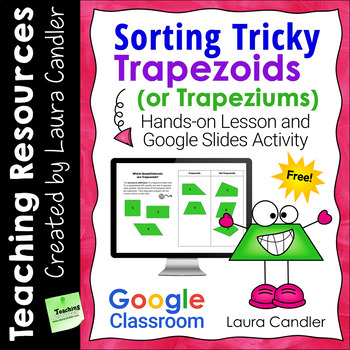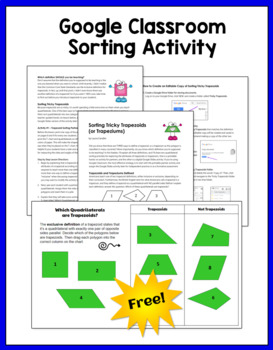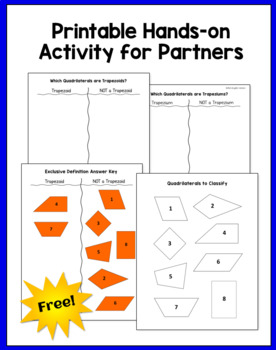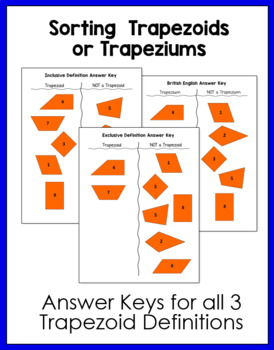Sorting Trapezoids (or Trapeziums) | Google Classroom Math Activity (Free)
- PDF
- Google Apps™

Description
Did you know that there are THREE ways to define a trapezoid, or a trapezium as this polygon is classified in many countries? More importantly, do you know which definition you’re supposed to be teaching?
In Sorting Tricky Trapezoids (or Trapeziums), I explain all three definitions and provide two quadrilateral sorting activities for exploring the attributes of trapezoids or trapeziums. One is a printable hands-on activity for partners, and the other is a digital Google Slides activity. If you’re using Google Classroom, the most effective strategy is to start with the printable partner activity and assign the Google Slides activity later for independent practice or as a formative assessment.
Check out these Google Classroom resources!
⭐ Penguin Fraction Task Cards with Google Quizzes
⭐ Polygon Sorting Activities for Google Classroom
⭐ Weathering and Erosion Task Cards with Google Quizzes
More Geometry Resources You'll Love!
☀️ Polygon Explorations | Sorting and Classifying Polygons
☀️ Polygon Sorting Activities for Google Classroom
☀️ Classifying Quadrilaterals | Sorting Activities, Games, Printables, and Quiz
☀️ Types of Angles (Classifying Angles)





